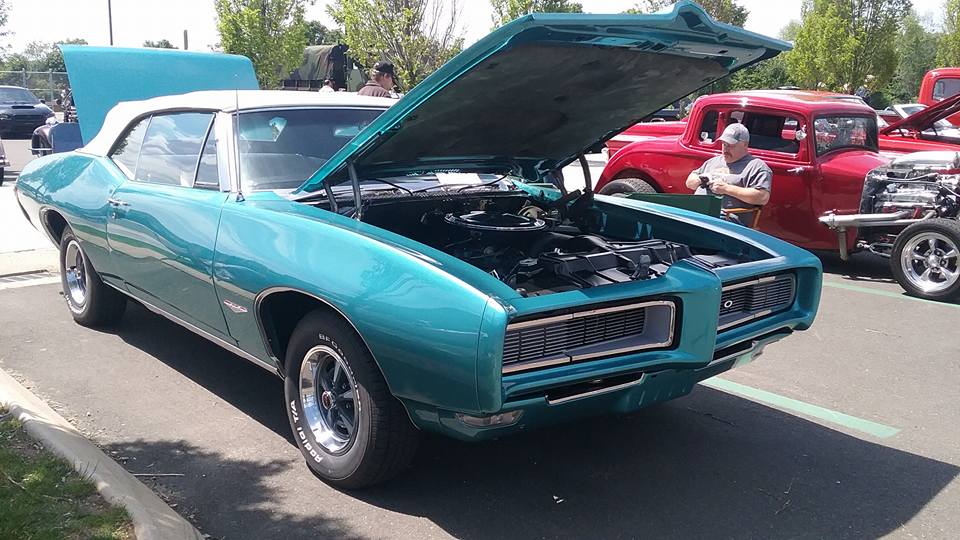

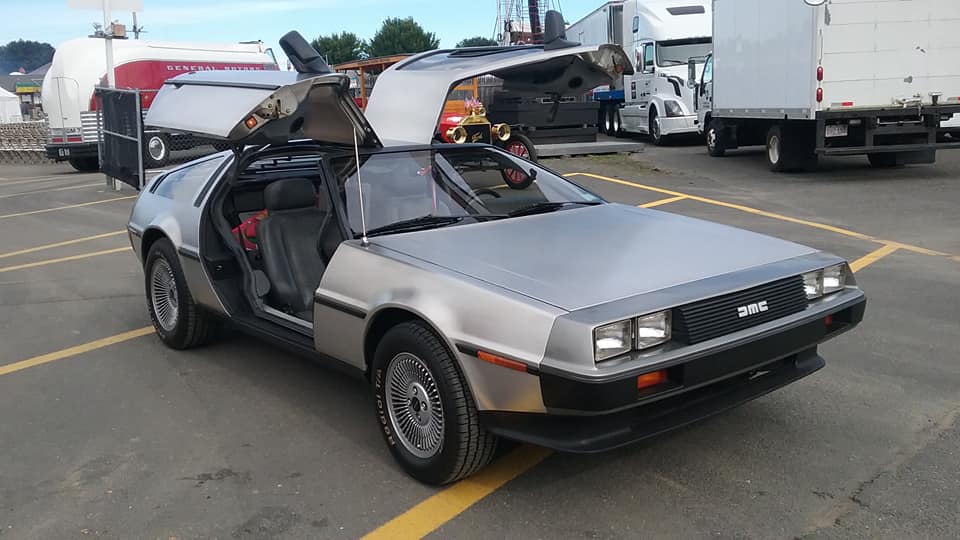
AJ’s Car of the Day: 1981 DeLorean DMC-12
Car: DeLorean DMC-12
Year: 1981
What makes it special: The DMC-12, most commonly referred to simply as “The DeLorean” was the only model ever produced. It was classified as a sports car originally manufactured by John DeLorean’s DeLorean Motor Company (or DMC ) for the American market from 1981 to 1983. The car featured gull-wing doors and an innovative fiberglass body structure with a steel backbone chassis, along with external brushed stainless-steel body panels. It became widely known and iconic for its appearance, and because a modified DMC-12 was immortalized as the DeLorean Time Machine in the “Back To The Future” movie franchise.
What made it famous: The DMC-12 features a number of unusual construction details, including gull-wing doors, unpainted stainless-steel body panels, and a rear-mounted engine. The body design of the DMC-12 is brushed SS304 stainless steel. Except for three cars plated in 24-karat gold, all DMC-12’s left the factory uncovered by paint or clearcoat. The DMC-12 features heavy doors supported by cryogenically preset torsion bars and gas-charged struts developed by Grumman Aerospace to withstand the stresses of supporting the doors. DMC-12 doors featured small cutout windows, because full-sized windows would not be fully retractable within the short door panels. The engine is a Peugeot–Renault–Volvo or PRV, 2.85 L V6, rated at 130 hp @ 2750 rpm of torque, that was designed and built under special contract with the DeLorean Motor Company. The 5-speed manual transmission, also designed by PRV, was built at the Renault facility.
Why I would want one: Although not the fastest, or considered supercar, these are a piece of automotive history, and the story about the rise and fall of the DeLorean Motor Company could easily be the subject of it’s own movie.
Fun fact: On January 27, 2016, DMC in Texas announced that it planned to build about 300–325 replica 1982 DMC-12 cars, each projected to cost just under $100,000.
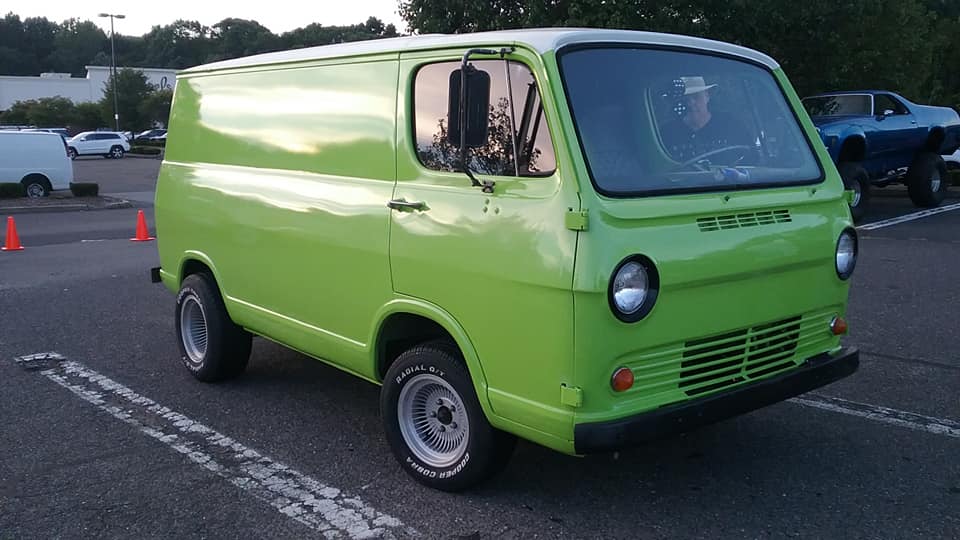
AJ’s Car of the Day: 1965 Chevrolet “Chevyvan” G10 Van
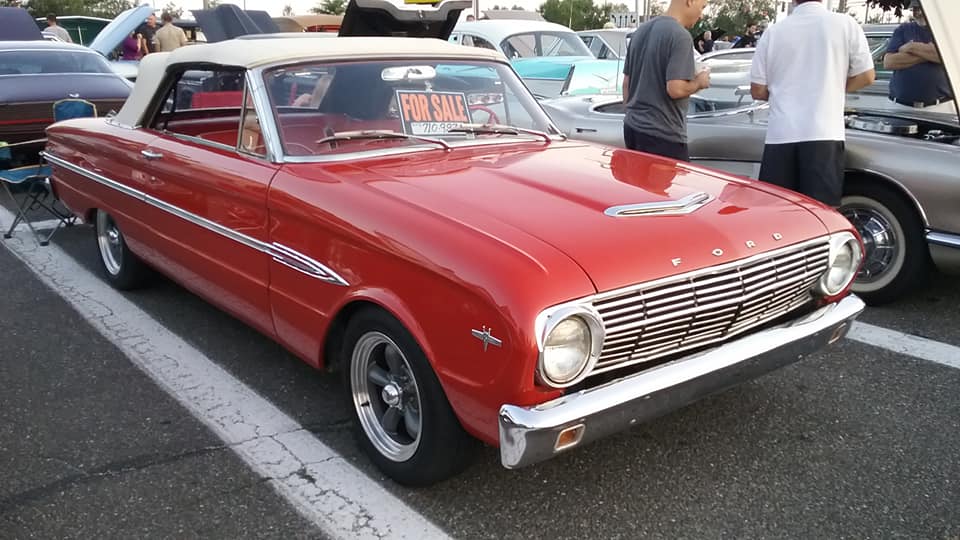
AJ’s Car of the Day: 1963 Ford Falcon Futura Convertible
Car: Ford Falcon Futura Convertible
Year: 1963
What makes it special: Ford’s Falcon was produced from 1960 to 1970 across three generations. It was a sales success for Ford initially, outselling rival compacts from Chrysler and General Motors introduced at the same time. Falcon was offered in two-door and four-door sedan, two-door and four-door station wagon, two-door hardtop, convertible, sedan delivery and Ranchero pickup body configurations. For several years, the Falcon name was also used on passenger versions of the Econoline van.
What made it famous: In 1963, even more models were available. There was now a four-door Futura and a Deluxe wagon. Futura Convertible and Futura Sports Convertible models were also included in the 1963 range. Later, hardtops, and the new “Sprint” model were introduced. Halfway through the model year, the Fairlane’s 164 hp “Challenger” 260 cu in V8 engine was offered for the first time. The Falcon was climbing in trim level from its budget beginnings to get more profit from the line. The only time a V8 option was available in a first-generation Falcon was the 1963½ model, and they were produced in very limited numbers, like the Sprint two-door hardtop and Sprint convertible. These first-generation Falcon Sprint cars were the basis for the 1964½ Mustangs released by Ford one year later. Many of the interior, chassis, suspension, and drivetrain components were derived from those used on the 1963½ Ford Falcon Sprint and/or Fairlane models. Basically, the 1963½ Falcon Sprint is nearly mechanically identical to the 1964½ Mustang while being cosmetically different.
Why I would want one: I’ve always wanted a Ford Falcon, at this point any model between the years 1960 and 1968.
Fun fact: The Ford Falcon brochure featured Charlie Brown and Lucy from the Peanuts comic strip who remained until 1965

12/14/18 – Chaz and AJ Podcasts – Wrapping Up 2018, Keith’s Top 5, Scot Haney Sings
Scot Haney Sings Christmas Music
The Bad Gift Grab Bag
Ned Lamont and the COO
Boss Keith Top 5 Chaz and AJ Moments
Wrapping Up 2018
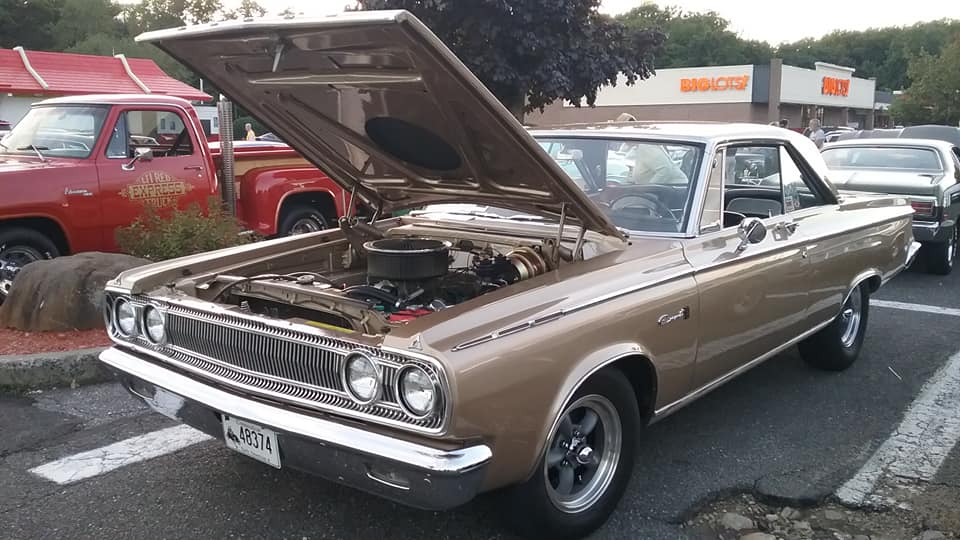
AJ’s “Badass Friday” Car of the Day: 1965 Dodge Coronet 500 Hardtop
Car: Dodge Coronet 500 Hardtop
Year: 1965
What makes it special: The Coronet was marketed by Dodge as a full-size car in the 1950’s, initially the division’s highest trim line but, starting in 1955, the lowest trim line. The Coronet reappeared for the 1965 model year as the intermediate sized B-body using a 117-inch wheelbase. For 1965, Dodge sold slightly over 209,000 units, making the Coronet the most popular model sold by Dodge that year. Trim levels initially were base Coronet including a Deluxe version, Coronet 440 and Coronet 500.
What made it famous: The top of the Coronet line-up was the Coronet 500 and was available only as a two-door hardtop or convertible in 1965. Slightly over 33,300 units were sold in 1965 and included as standard, a V8 engine at 273 cubic inches, exterior trim and badging, bucket seats, padded dash and chrome floor console. Coronets were manufactured at Chrysler’s Los Angeles assembly plant and at Lynch Road assembly plant in Detroit. Engines offered for 1965 included the base 225 Slant-Six, 273, 318 Polyhead, 361 of which was the last year for this big block engine was 1966, 383 and 426 in multiple HP choices. Sales brochures list the 413 its last year offered)as available, but no records exist of this engine, commonly used in Imperials, being installed in Coronets for 1965. A tachometer was optional.
Why I would want one: Love the 1960’s Mopar offerings. They had looks, and available powerplants to match.
Fun fact: A Coronet is a small crown consisting of ornaments fixed on a metal ring.

Mike’s Record Review: Holiday Hits
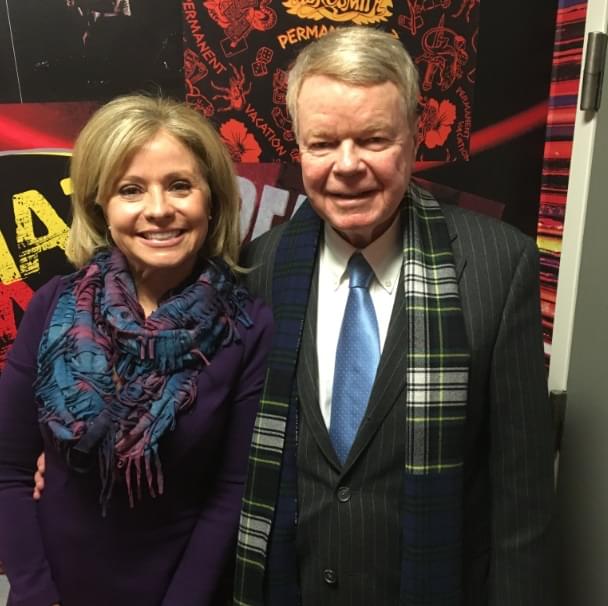
12/13/18 – Chaz and AJ Podcasts – Jimmy Koplik on Rock Hall Inductees, Hugh Keefe and Tara Knight on Grease Guy
Jimmy Koplik Reacts to Rock Hall Inductees
Hugh Keefe and Tara Knight on Grease Guy and Maple Syrup Man
Jennifer’s Defense of Dan Fogelberg
#DumbAssNews – The Grease Guy
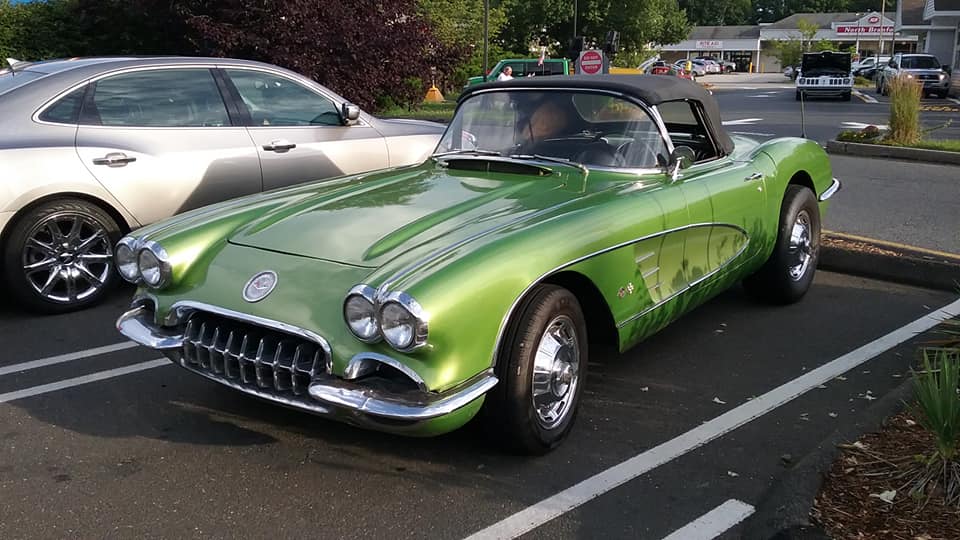
AJ’s Car of the Day: 1960 Chevrolet C-1 Corvette
Car: Chevrolet C-1 Corvette
Year: 1960
What makes it special: The C1 Chevrolet Corvette is the first generation of the sports car. It was introduced late in the 1953 model year, and produced through 1962. It is commonly referred to as the “solid-axle” generation, as the independent rear suspension did not appear until the 1963 Sting Ray. The Corvette was rushed into production for its debut model year to capitalize on the enthusiastic public reaction to the concept vehicle, but expectations for the new model were largely unfulfilled. Reviews were mixed and sales fell far short of expectations through the car’s early years. The program was nearly canceled, but Chevrolet would ultimately stay the course.
What made it famous: In an era of chrome and four headlamps, the Corvette succumbed to the look of the day. The 1958 model year and the four that followed all had the exposed four-headlamp treatment and prominent grills. Last features to appear in 1960 models included taillamps molded into the rear fenders and heavy grill teeth. New features include aluminum radiators, but only with 270 hp and 290 hp engines. Also for the first time, all fuel-injection engines required manual transmissions. The 1960’s Cascade Green was metallic, unique to the year and the rarest color at 140 made. Rare options: RPO 579 250 hp engine, RPO 687 heavy-duty brakes and suspension, RPO 276 15″×5.5″ wheels, RPO 473 power convertible top, RPO 426 power windows.
Why I would want one: Of all the years of America’s iconic sports car, the C-1 first-gen’s are my favorite.
Fun fact: General Motors designer Harley Earl loved sports cars. Earl convinced GM that they needed to build a two-seat sports car, and with his Special Projects crew began working on the new car, “Project Opel” in late 1951. The result was the hand-built, EX-122 pre-production Corvette prototype, which was first shown to the public at the 1953 General Motors Motorama at the Waldorf-Astoria in New York City on January 17, 1953. Production began six months later.
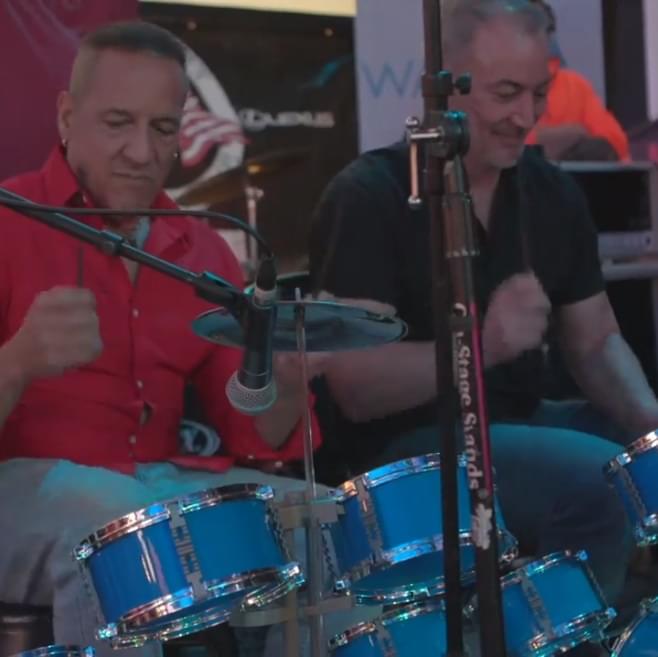
12/12/18 – Chaz and AJ Podcasts – Favorite Christmas Songs, Tornado Witness
The Tribe’s Favorite Christmas Songs
Boss Keith’s Favorite Christmas Song
Dr. Tammy’s Favorite Christmas Song
#DumbAssNews – The Tornado Witness
